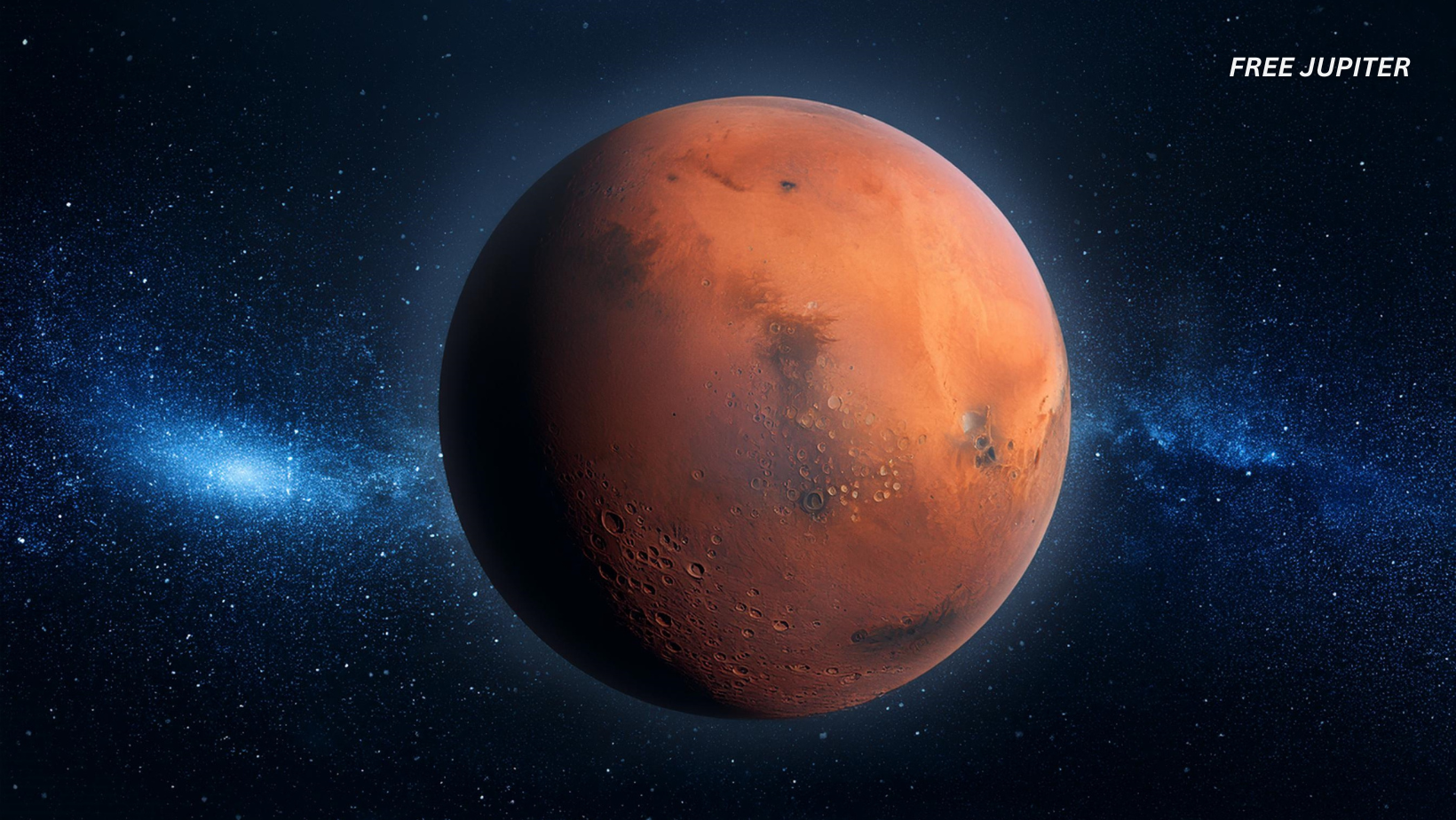Mars has long been thought of as a barren, dusty world. However, beneath its surface, surprising secrets are coming to light. Recent radar scans have revealed an enormous underground ice deposit stretching across the planet’s equator. If melted, this ice could cover Mars in a shallow ocean about nine feet deep. This discovery challenges prior assumptions about the planet’s climate history and offers new possibilities for future exploration.
The Medusae Fossae Formation (MFF), a vast, wind-sculpted terrain of ridges and hills, has intrigued scientists for years. Once thought to be composed solely of volcanic ash or dust, this region is now revealing evidence of something far more significant. Advanced radar data from the Mars Express spacecraft suggests that the MFF may be far thicker than previously believed, extending to depths of up to 2.2 miles (3.7 kilometers). More importantly, the radar echoes are consistent with layered ice, resembling the planet’s well-documented polar ice caps.
Mysterious Landscape with an Icy Secret
One of the most puzzling regions on Mars is the Medusae Fossae Formation (MFF). This vast area, shaped by wind and erosion, consists of ridges and hills that have baffled scientists for years. It was previously believed to be made up of volcanic ash or ancient dust deposits. But fresh insights from advanced radar technology suggest something much more remarkable lies beneath the surface.
Radar signals from the Mars Express spacecraft indicate that the MFF may be far thicker than once estimated. Data now suggests this formation extends to depths of 2.2 miles (3.7 kilometers). More importantly, the radar echoes reflect characteristics consistent with layered ice, much like the planet’s polar caps. These findings hint at the presence of a vast frozen reservoir buried under layers of dust.
Read more: NASA’s Curiosity Rover Detects The Largest Organic Molecules Found on Mars Yet
A Breakthrough in Understanding Mars’ Subsurface
For decades, the exact composition of the MFF remained a mystery. Some experts speculated it was a massive accumulation of wind-blown dust, while others suggested remnants of an ancient ocean. Now, thanks to updated radar observations, scientists have a clearer picture.
The instrument responsible for this revelation is MARSIS (Mars Advanced Radar for Subsurface and Ionospheric Sounding). It works by sending radio waves into the ground and analyzing the signals that bounce back. These reflections help determine what lies hidden beneath Mars’ surface.
Analysis of the radar data indicates that the MFF’s subsurface layers exhibit distinct changes in density. This pattern strongly suggests alternating bands of ice and dust. If the formation consisted solely of dry material, such as volcanic ash, gravity would have compacted it over time. However, the observed structure does not align with this expectation, reinforcing the likelihood that ice is a major component.
Ice Hidden Beneath a Protective Blanket
What makes this finding even more compelling is the way the ice appears to be preserved. A thick layer of dust or ash—potentially up to 1,000 feet (300 meters) deep—seems to insulate the frozen water. This natural covering helps protect the ice from Mars’ harsh conditions, preventing it from sublimating into the thin atmosphere.
Previous radar studies had already hinted at the presence of low-density material within the MFF. The new data strengthens the case that large amounts of ice exist beneath the Martian surface, significantly altering our understanding of the planet’s geological and climatic past.
Read more: US Fish And Wildlife Is Literally Begging You To Eat More Invasive Marsh Rodents
A Vast Water Supply Near the Equator
The sheer scale of this underground ice deposit is staggering. If all the frozen water stored in the MFF melted, it would create an ocean covering Mars in a layer between 5 and 9 feet (1.5 to 2.7 meters) deep. This is more water than what is currently contained in Earth’s Red Sea.
Unlike Mars’ polar ice caps, which are known to hold significant amounts of frozen water, this deposit is located much closer to the equator. This is a crucial detail because future human missions to Mars are more likely to land near the equator, where conditions are less extreme. Having a reliable water source in this region could make long-term exploration and colonization more feasible.
A Clue to Mars’ Climate History
Beyond its implications for human exploration, this discovery raises new questions about Mars’ ancient environment. The presence of such a large ice deposit at the equator suggests that, at some point, the planet’s climate was very different from today’s arid landscape.
Scientists have long debated whether Mars once had lakes, rivers, or even oceans. The discovery of equatorial ice provides new evidence that water may have persisted on the surface for longer than previously thought. If Mars once had a wetter climate, it could have supported conditions favorable for life.
“This challenges what we thought we knew about the Medusae Fossae Formation,” says Colin Wilson, a scientist with the European Space Agency’s Mars exploration program. “It raises fundamental questions—how long has this ice been there, and what does it tell us about Mars’ past?”
Read more: Mercury Retrograde Comes To An End Soon And Every Sign Will Feel The Effects
Unlocking the Potential for Future Missions
One of the most exciting aspects of this discovery is its potential use for future explorers. Water is a critical resource for survival in space missions. If accessible, the ice within the MFF could provide drinking water, oxygen, and even fuel for rockets.
However, accessing this frozen treasure will not be easy. The thick insulating dust layers make drilling a complex challenge. Current technology may not be advanced enough to reach the ice directly, but future missions could bring the necessary tools to extract and analyze these frozen deposits.
Meanwhile, another spacecraft, the ExoMars Trace Gas Orbiter, has provided additional data supporting the presence of hidden water. This orbiter, operated by the European Space Agency, has detected hydrogen-rich zones in various locations, including the Valles Marineris canyon system. Together, these discoveries point to a much wetter Mars than previously assumed.
Read more: SpaceX Loses Contact With Spacecraft During Starship Mega Rocket Test Flight
What Lies Ahead?
Although direct access to the MFF’s buried ice remains out of reach for now, ongoing research continues to reshape our understanding of Mars. Future missions equipped with more advanced drilling and analysis tools could uncover even more secrets hidden beneath the planet’s surface.
This discovery strengthens the case that Mars holds far more frozen water than expected—especially in regions more accessible to future missions. It also fuels new debates about whether the MFF’s formation is linked to ancient Martian seas, glacial activity, or long-lost weather patterns.
As scientists continue to unravel these mysteries, one thing remains clear: Mars is not just a dry and dusty world. Beneath its surface, an ancient and frozen history is waiting to be explored.










